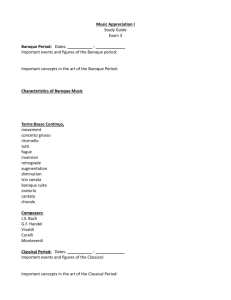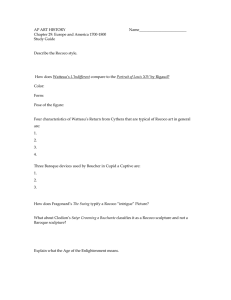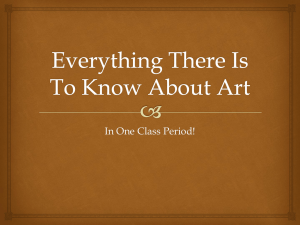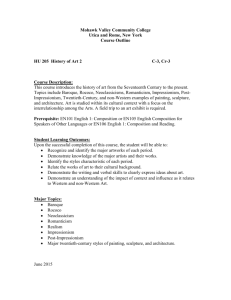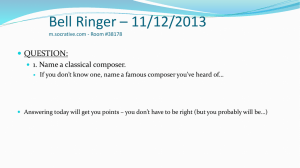The Classical Era
advertisement
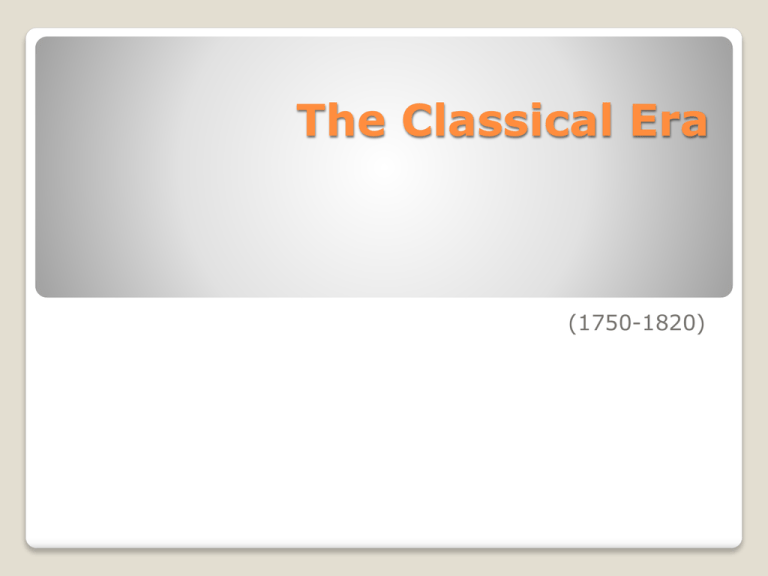
The Classical Era (1750-1820) Based on the ideals of Ancient Greece and Rome, the Classical period stressed the importance of symmetry and form in the arts. In music, the elaborate ornamentation of the Late Baroque period gave way to a new simplicity and elegance. Emotional content was still present, but it was never allowed to obscure the clarity and formal structure of the music. The Classical period has been called the "Golden Age of Music" because it was at this time that the major forms of Classical music--the symphony, concerto, sonata, and string quartet--were fully developed. The sonata is the most important musical form of the Classical period: It influenced the development of all areas of orchestral and chamber music. Although the sonata was used most often in the opening movements of compositions, it is also found in slow movements and finales. The sonata is made of three sections: the exposition, the development, and the recapitulation. Like a story with a beginning, middle, and end, the result is a musical piece that is at once clearly symmetrical and satisfyingly whole, but which conveys a sense of growth as it unfolds. http://www.youtube.com/watch?v=l45DA uXYSIs Although the Classical Era lasted for only 70 years, there was a substantial change in the music that was being produced. Classical music placed a greater stress on clarity with regard to melodic expression and instrumental color. The early 1700s reflected a musical style known as Rococo. This style served as a transition from the Baroque to the Classical Era. Rococo, which developed in France, is actually an art term that described a new art style which was both a light and embellished. Rococo developed first in the decorative arts and interior design. Louis XIV's succession brought a change in the court artists and general artistic fashion. By the end of the king's long reign, rich Baroque designs were giving way to lighter elements with more curves and natural patterns. Though Rococo originated in the purely decorative arts, the style showed clearly in painting. These painters used delicate colors and curving forms, decorating their canvases with cherubs and myths of love. Portraiture was also popular among Rococo painters. Some works show a sort of naughtiness or impurity in the behavior of their subjects, showing the historical trend of departing away from the Baroque's church/state orientation.


